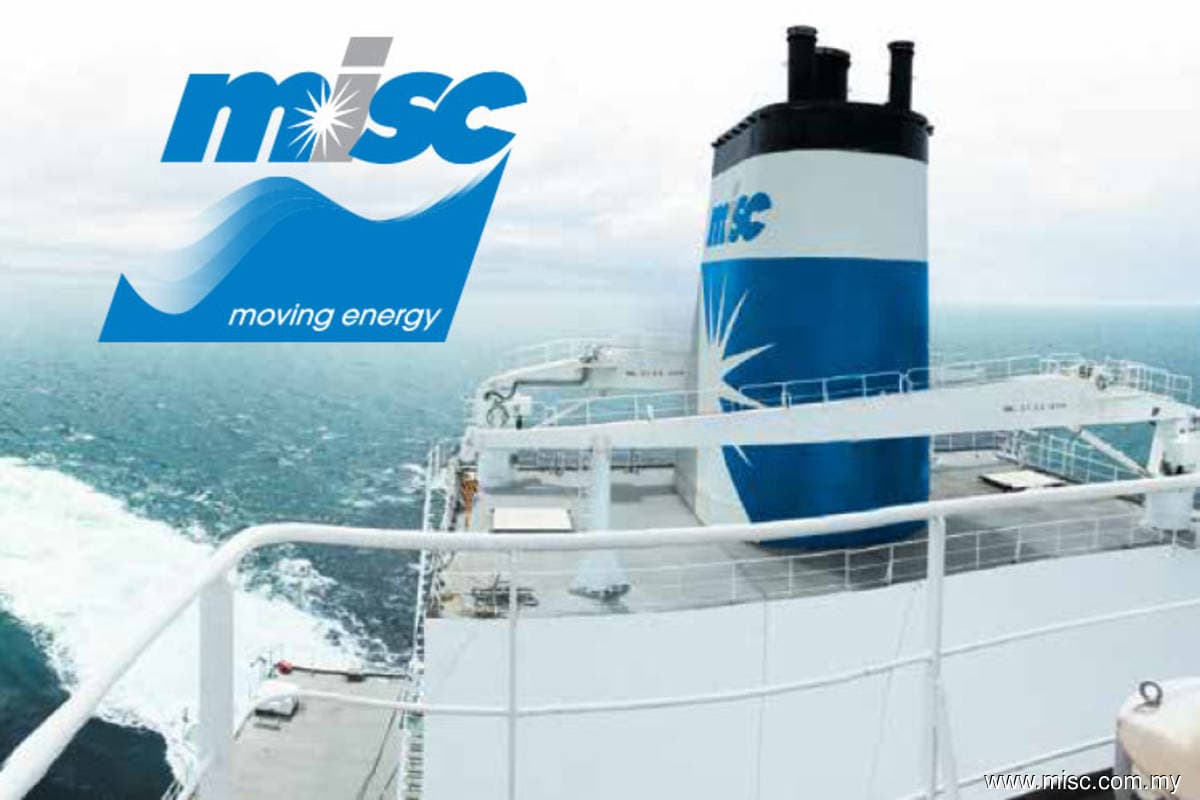
KUALA LUMPUR (Oct 15): Energy shipping group MISC Bhd has been on analysts' radar in recent months, led by its transition towards more long-term charters for its petroleum and gas energy shipping segments, and stable outlook for its offshore segment.
Now, another catalyst could be in the works for MISC’s petroleum shipping segment: the higher demand for oil and gas (O&G) that reflects the energy crunch worldwide as the shipping group moves into the seasonally active period for tankers in the fourth quarter of 2021.
The Baltic Dirty Tanker Index has been on the uptrend through October, with the index at 710 points after a suppressed period in the summer season when the Covid-19 pandemic was still reeling.
“The 4Q period is a high season for crude tankers,” an analyst covering the sector told The Edge. “If freight rates go up, investors may have a trading angle,” the analyst said.
Tanker rate upside, but small spot charter fleet to capture it
MISC ships liquefied natural gas (LNG), as well as crude oil and petroleum products. The two divisions contributed about two-thirds of its RM1.09 billion operating profit in the first half ended June 30, 2021 (1HFY2021).
LNG prices have more than doubled this year to US$32/MMBtu, as a tight supply condition is further compounded by countries in Europe and parts of Asia scrambling to stock up ahead of the winter season.
MISC’s LNG fleet — one of the largest in the world with 38 vessels — may benefit from higher volume from the jump in demand. However, the short-term upside from LNG tanker rates may be limited, as almost 90% of the fleet is on long-term charter.
Comparatively, MISC operates 59 petroleum and chemical vessels as at end-June, of which 28% is still in the spot market.
While the benchmark Baltic Dirty Tanker Index has come off its record lows in 4Q2020, the average 12-month time charter rate is still suppressed, according to data from Allied Shipping Research. Notably, the index is still more than 50% lower than the peak seen in 2019-2020.
VLCC or very large crude carriers' one-year charter rate, meanwhile, has further retreated from near US$27,000/day in end-2020 to below US$19,000 earlier this month, before rebounding to US$19,500 last week, the data showed.
MISC’s spot charter fleet size was larger in the past. The group transitioned more towards time charter in recent years, which helped reduce the impact of volatile charter rates on its earnings. Its petroleum division had been in the red previously amid low spot charter rates.
Analysts upbeat on share price outlook
Aside from the two shipping divisions, MISC is also expecting smooth sailing in its offshore segment, which contributed the remaining one-third of its operating profit in 1HFY21.
The offshore segment, which builds and operates floating production storage offloading (FPSO), is now focusing on delivering the Mero-3 FPSO vessel in Brazil, said to be valued at some US$2 billion.
However, outlook remains unexciting for its 66%-owned loss-making unit, Malaysia Marine & Heavy Engineering Bhd.
This is due to bigger-than-expected losses of RM138.74 million in 1HFY21, although it should see more activities in its four docks moving forward.
For 1HFY21, MISC booked a revenue of RM4.89 billion, with net profit of RM968.6 million. The latter makes up 54.94% of the full-year FY21 consensus estimate of RM1.796 billion, Bloomberg data showed. Full-year revenue consensus forecast came in at RM10.296 billion.
The stock has 12 "buy" calls, two "hold" calls and no "sell" call. Target price among the 16 analysts covering it ranged from RM6.60 to as high as RM8.60, with an average of RM7.82.
The counter closed four sen or 0.56% higher at RM7.15 on Thursday (Oct 14), giving it a market capitalisation of RM31.92 billion. The stock has climbed slightly over 8% year to date. At RM7.15 per share, MISC trades at a historical dividend yield of 4.62%. It paid 33 sen per share in FY20.
Steady growth prospects but competition may rise
Moving forward, MISC’s petroleum segment will see 11 new vessels added to its fleet from now till end-2023.
In the longer term, the ongoing global transition towards gas as a transition fuel source in the net-zero carbon future will also be a boon to MISC’s growth prospects.
The group typically builds its vessels already tied with long-term contracts. Currently, three new LNG vessels are being built — one to be completed this year, with another two in 2023.
“However, it should be pointed out that LNG is becoming more commoditised, with more ship owners entering into what was previously a specialised segment.
“Consequently, while existing contracts are largely stable, new contracts in the future may register lower and lower returns on competition,” an analyst pointed out.


